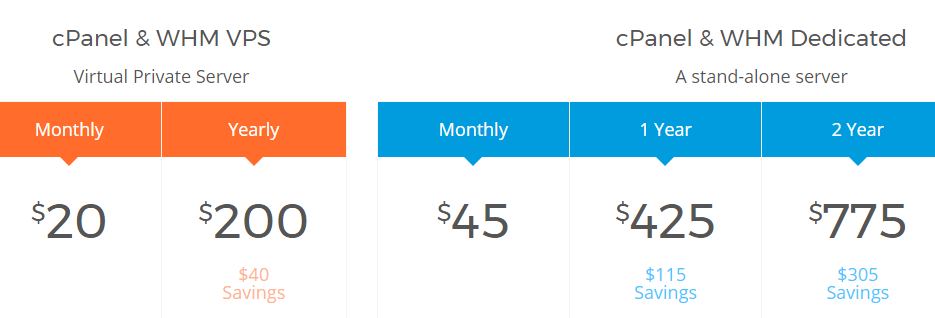- Jun 20, 2017
 0
0- by A2 Marketing Team
As a hosting user, you’ll probably spend most of your time interacting directly with your site. However, there may be situations in which you’ll need more comprehensive access to your server, and that’s where web hosting control panels come in.
For example, this type of software enables you to access features that you can’t through a Content Management System (CMS). Knowing what your options are and their differentiating features is the best way to decide which control panel is best for you.
In this article, we’ll introduce you to two of the most famous names in the field – cPanel and Plesk. We’ll tell you all about their features, prices, and how to pick the right one for your needs. Let’s get started!
An Introduction to cPanel
cPanel is the most popular control panel software these days. This type of application enables you to interact with your server and perform specific actions, such as creating backups, managing your databases, and so on.
This particular software mainly owes its popularity to two reasons. First, it happens to be rather intuitive, which is fantastic news if you don’t have too much experience dealing with a control panel. Most of its features include tooltips and decent instructions, which means arguably anyone could use them without too much trouble. Secondly, cPanel was designed for Linux-based systems, which happen to power the majority of the web.
It’s worth noting that cPanel doesn’t include customer management features – such as account creation – out of the box. For those, you’ll need to set up WHM alongside it. The good news is both platforms ship together regardless of which plan you choose.
Key Features:
- Linux-based hosting control panel
- Includes a broad range of features, including backup and database tools
- Enables users to set up most CMSs with simple installers
- Can power a hosting platform if used alongside WHM
Price:
A monthly license for both cPanel and WHM will set you back $20, if hosted on a Virtual Private Server (VPS).
An Introduction to Plesk
At first glance, Plesk isn’t that different from cPanel. In fact, the thing that sets both control panels apart is that Plesk is available for both Windows and Linux. If you’re using a Windows-based server, the choice is basically made for you.
However, Plesk has more than just availability going for it. It features a very clean and modern interface that may remind you of the WordPress dashboard. All the key features you need to access can be reached from a sidebar and the rest of the screen adjusts depending on which one you pick.
Moving onto features, Plesk integrates both server and account management out of the box, which should make your life simpler. The platform also includes nearly every feature cPanel does, which makes choosing between both difficult. Don’t worry though, we’ll help you do that in a minute.
Key Features:
- Supports both Windows and Linux-based servers
- Includes both server and account management features out of the box
- Supports most popular CMSs and provides installers for them
Price:
Plesk plans start at $5 per month without account management features and rise to $10 per month with them.
Plesk vs. cPanel: A Head to Head Comparison
First off, it’s important to mention there are a lot of plans that won’t let you switch between control panels. In fact, if you’re interested in a Plesk-based setup, you might have to do some digging to find one. However, this mostly applies to shared hosting.
Once you move on to more customizable plans like VPSs and dedicated servers, you’ll usually get your choice of hosting control panel. That’s where things get tricky.
If you’re a Linux user, you can opt for either Plesk or cPanel. Both of them are easy to use and pack almost all the same features. As far as interfaces go, Plesk may be a bit more modern-looking, but cPanel has the advantage of displaying all its features on a single page. Honestly, your choice here will come down mostly to personal taste.
With that in mind, it might be easier to find qualified support if you’re using cPanel since that’s the most popular option. However, both platforms are so intuitive it may never come to that.
On the other hand, if you’re a Windows user, as mentioned, the choice is basically made for you. Plesk is the most mature hosting control panel available for the platform, and it’ll serve you well.
Finally, let’s talk about costs. If you’re looking for the absolute cheapest option and you don’t intend to use your control panel to set up multiple accounts, Plesk is the way to go.
The major downside is that Plesk limits the number of domains for its two starter plans, which is something cPanel doesn’t do.
Moving on, if you’re looking to set up a hosting business with either control panel, the prices between their plans are pretty comparable. Plesk prices its Web Host Edition tier at $15, whereas cPanel’s basic plan costs $20.
The difference isn’t huge, so you might want to try both options and figure out which one you’re more comfortable with.
Conclusion
Your choice of web hosting control panel can have a large impact on the way you interact with your server. After all, it’s your panel that provides you with the features you need to manage your project. Even if you don’t have the option of choosing an alternative now, at some point you may need to know about the differences between cPanel and Plesk (and when to use each).
cPanel is the most popular option these days, and it’s not without cause. After all, it’s easy to use, and it was created for Linux-based servers, which power the majority of the web. Plesk, on the other hand, is available for both Linux and Windows, which is great if you want to stick with a similar panel across multiple servers.
Image credit: Pixabay.














